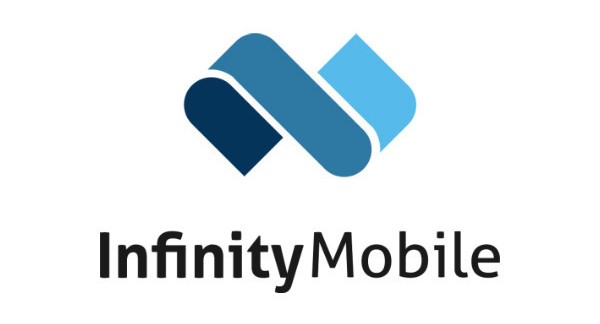The day Uber became a PSP
Author: Geert Roete, CEO Sayl Cloud - NFT, CRM & Ecommerce.
A newsworthy item that got plowed under a little in the whole #deletefacebook storm this week, is the fact that Uber has quietly applied for a payment processing license this week. That's right, Uber Technologies has set up a new subsidiary Uber Payments BV and wants to become an Electronic Money Institution (EMI). Coincidence or not, their expansion into the payments domain comes in the same week that the PSD2 law has (finally) been released by the (Belgian) government.
A newsworthy item that got plowed under a little in the whole #deletefacebook storm this week, is the fact that Uber has quietly applied for a payment processing license this week. That's right, Uber Technologies has set up a new subsidiary Uber Payments BV and wants to become an Electronic Money Institution (EMI). Coincidence or not, their expansion into the payments domain comes in the same week that the PSD2 law has (finally) been released by the (Belgian) government.

Uber as EMI
Uber's application for EMI could bode ill for their current global payment provider, Adyen. The Dutch provider has grown tremendously the past years, soaring on the success of clients like Netflix, AirBnB, Spotify and Facebook. But what if all these behemoths decided to become an EMI? They could do it from a purely financial point of view: due to the ever increasing number of transactions, maybe the cost of the PSP outweighs the cost of doing it themselves. In a starter scenario, it makes sense to externalize non-core functionalities, but with volume building up, these companies will revisit their buy or build strategy from time to time.
What could drive Uber
Apart from this financial cost driver, what could drive the Ubers of this world to become a PSP? They are already quite active in the fintech domain, with partnerships including Barclays and Visa (co-branded cards), but this move is far bolder. Combine their ability to be an Electronic Money Institution with the capabilities of PSD2 and you open a big box of digital possibilities. They already control the funds of thousands of drivers, thousands of restaurants (UberEats), what if they could control the funds of their customers too?
Being an EMI means they can easily set up an Uber Wallet and start to generate so-called Uber credits. Customers will get incentivised to top up this Uber wallet with one larger transaction (e,g. 100$), which then will be exchanged for a specific number of credits, to be used within a certain timeframe. Given the sheer number of customers, this could translate into further growth of their war chest, exclusively sponsored by their loyal customer base.
PSD2 opens up possibilities
Add to that the introduction of PSD2 and, with the customer's consent, a far better understanding of the payment behavior of their individual clients, they could literally follow where you are eating/sleeping/dining and, "by coincidence", have an Uber driver right around the corner to bring you home, or serve your favored food the moment you feel hungry. The customer only needs to pay with Uber credits and third parties in the ecosystem will not make a dime. This direction has exactly been the direction Amazon has been heading into for multiple years now, in a big 'eats all' strategy.
Final thoughts
Let's be clear: for all third parties in the (payment) ecosystem, getting closer to the customer and offering them the right digital services at the right moment will become more important than ever. This trend fits perfectly within our vision of integrated ecosystems, and helping our clients achieve their goals in a better, faster and more integrated way is key to that.
Uber's application for EMI could bode ill for their current global payment provider, Adyen. The Dutch provider has grown tremendously the past years, soaring on the success of clients like Netflix, AirBnB, Spotify and Facebook. But what if all these behemoths decided to become an EMI? They could do it from a purely financial point of view: due to the ever increasing number of transactions, maybe the cost of the PSP outweighs the cost of doing it themselves. In a starter scenario, it makes sense to externalize non-core functionalities, but with volume building up, these companies will revisit their buy or build strategy from time to time.
What could drive Uber
Apart from this financial cost driver, what could drive the Ubers of this world to become a PSP? They are already quite active in the fintech domain, with partnerships including Barclays and Visa (co-branded cards), but this move is far bolder. Combine their ability to be an Electronic Money Institution with the capabilities of PSD2 and you open a big box of digital possibilities. They already control the funds of thousands of drivers, thousands of restaurants (UberEats), what if they could control the funds of their customers too?
Being an EMI means they can easily set up an Uber Wallet and start to generate so-called Uber credits. Customers will get incentivised to top up this Uber wallet with one larger transaction (e,g. 100$), which then will be exchanged for a specific number of credits, to be used within a certain timeframe. Given the sheer number of customers, this could translate into further growth of their war chest, exclusively sponsored by their loyal customer base.
PSD2 opens up possibilities
Add to that the introduction of PSD2 and, with the customer's consent, a far better understanding of the payment behavior of their individual clients, they could literally follow where you are eating/sleeping/dining and, "by coincidence", have an Uber driver right around the corner to bring you home, or serve your favored food the moment you feel hungry. The customer only needs to pay with Uber credits and third parties in the ecosystem will not make a dime. This direction has exactly been the direction Amazon has been heading into for multiple years now, in a big 'eats all' strategy.
Final thoughts
Let's be clear: for all third parties in the (payment) ecosystem, getting closer to the customer and offering them the right digital services at the right moment will become more important than ever. This trend fits perfectly within our vision of integrated ecosystems, and helping our clients achieve their goals in a better, faster and more integrated way is key to that.

Interested in our updates ?
Once a month you will learn about our latest features and hottest news. And no spam of course.
